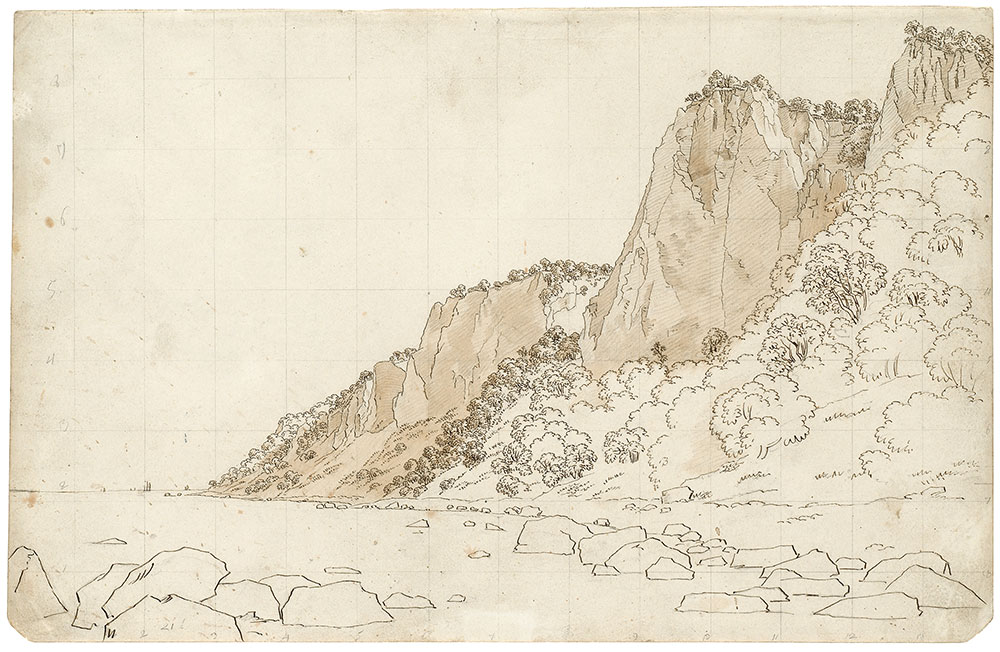
Rügen—a large island in the Baltic Sea, off the coast of Germany—was an important destination for Friedrich. The drawings he made during his numerous trips to the area focus on dramatic chalk cliffs and rugged, stony beaches, capturing the island’s austere, windswept character. In this sheet, the artist reduced the Rügen landscape to its most essential features, relying on clear, precise contours and sparingly applied washes. Friedrich frequently used the landscape motifs he developed in such works as the basis for highly finished sepia drawings, such as Stony Beach at Moonrise (Stony Beach with Setting Sun), on view nearby. In order to transfer his compositions to other formats, Friedrich often squared his sketches, as is the case here.
Caspar David Friedrich
German, 1774–1840
Stubbenkammer on Rügen, 1801
Pen and black ink and brown wash over graphite pencil; squared
Kupferstich-Kabinett, Staatliche Kunstsammlungen Dresden, INV. NO. C 1968-357
© Kupferstich-Kabinett, Staatliche Kunstsammlungen Dresden
Photo: Herbert Boswank
